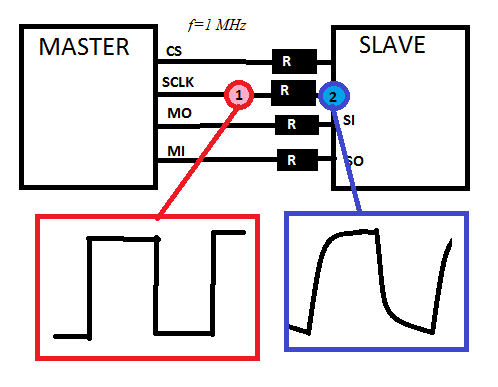ivenzar
Member level 2
Given the situation depcited in Figure 1 operating at f=1MHz. There are some serial resistors. Which is the function of those resistors?
The waveform obtained in 1 is different from the one measured at 2 (seems a capacitor charging and discharging). Why?
Someone knows any page to find more information?
Greetings.

The waveform obtained in 1 is different from the one measured at 2 (seems a capacitor charging and discharging). Why?
Someone knows any page to find more information?
Greetings.

Last edited by a moderator: